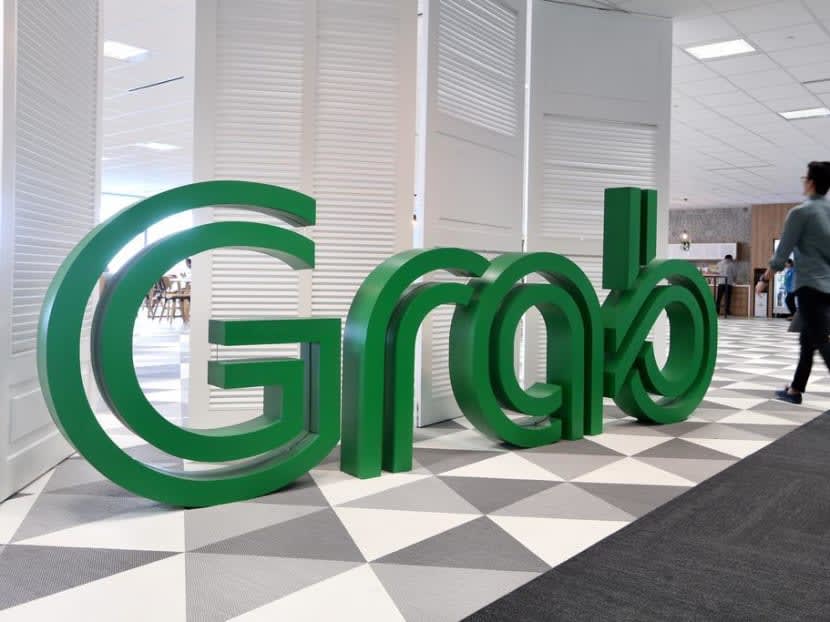Grab eyes S$1.4b Southeast Asian market in push to sell mapping data to other firms, govt agencies
SINGAPORE — Technology giant Grab Holdings is looking to sell the location-based services and mapping data it has amassed from consumers, in a bid to tap into a market that it estimated is worth US$1 billion (S$1.38 billion) a year in Southeast Asia.

- Grab is looking to sell its mapping data and location-based services to companies such as telcos, logistics firms and government agencies
- By the end of 2022, it will depend solely on its in-house "location-based intelligence and services" called GrabMaps
- There are no plans for GrabMaps to be its own standalone application, such as Google Maps
- The technology will be centred on improving the service provided by the drivers and delivery riders on the Grab application
SINGAPORE — Technology giant Grab Holdings is looking to sell the location-based services and mapping data it has amassed from consumers, in a bid to tap into a market that it estimated is worth US$1 billion (S$1.38 billion) a year in Southeast Asia.
Singapore-based Grab, which has been posting heavy losses from its ride-sharing and food delivery services, hopes to sell this intellectual property to companies such as telecommunication firms, logistic firms and government agencies.
In doing so, Grab will be competing against the map services of United States technology giant Google, for example.
In a press release on Wednesday (June 8), Grab said that it had launched GrabMaps to spearhead the push to sell these services, adding that it already uses Grab data in seven of the eight countries where it operates.
The firm expects to be fully self-sufficient across the eight countries by the third quarter this year. It operates in Singapore, Cambodia, Indonesia, Malaysia, Myanmar, the Philippines, Thailand and Vietnam.
GrabMaps, which was initially developed for in-house use, has been gradually expanding over the last five years and helps to optimise the roles of delivery riders and private-hire drivers.
This is done by using data to calculate estimated arrival times and route planning, and to identify "points of interests" such as specific pickup points and entrances to buildings.
Over the years, Grab has identified about 33 million of these "points of interest", as well as other data such as speed limits, traffic conditions and toll gantry rates in Southeast Asia.
Grab co-founder Tan Hooi Ling said that the investment in GrabMaps has resulted in greater efficiency and cost savings for the business.
"We are turning these unique capabilities that we've now built and invested in, into new revenue opportunities," she said at a media briefing in Singapore on Wednesday.
"We are confident that these technologies... can definitely help other companies struggling with the same issues (as Grab)."
Before Grab became fully self-sufficient on its in-house technology, it had been using various third-party location-based services to help its drivers navigate. However, Ms Tan said that these had been lacking.
"Third-party mapping services that we relied on did not have (in their maps) small alleyways that Southeast Asia so commonly relies on, or they did not have the right pickup or drop-off points in the big malls in Southeast Asia," she said.
"Because we couldn't get the quality of service that our consumers and partners deserved, we decided that it was time to build and invest into it ourselves."
Agreeing, Mr Philipp Kandal, Grab's head of Geo, said that the speed at which the map updates with new information such as new businesses and pickup points is crucial to Grab's service.
"Conventional mapping services operate on a yearly refresh cadence. Honestly, for us, this is by far not good enough."
He said that what sets GrabMaps apart from its competitors is its ability to crowdsource information from its drivers and delivery riders, as well as data from consumers.
For instance, if a driver notices a pickup point that is not on the Grab application, he or she may offer feedback to the firm, and the pickup point could be up in "a matter of days".
"Every day, our merchants, driver partners and consumers contribute to make the map better," he said.
Other than accessing the data that Grab already has mapped out in Southeast Asia, firms who buy Grab's mapping service will also be able to tap map-making software that Grab has developed.
For instance, Grab is using a camera that can be mounted on the helmets of delivery riders, who can then map out the areas through which they drive.
Mr Kandal added that Grab is already in talks with "a few early partners" who are interested in GrabMaps, but is "not able to disclose any specific names" until later this year.
He also said that there are no plans for GrabMaps to be its own standalone application for consumers, such as Google Maps, but that the technology will be centred on improving the service provided by the drivers and delivery riders.
"We are truly focusing on where we have a right to win," Mr Kandal said. "We know that it's a very, very complicated space, so we're at this point not offering... a general purpose solution."
However, he said that there will be trickle-down effects that will benefit consumers.
"The maps that Grab is powered with, we built them in order to be more reliable for the consumer."
The announcement of GrabMaps came weeks after it was reported that two top executives at Grab — Mr Chris Yeo, who heads Grab's payments and rewards business, and Mr Jeffrey Goh, who leads the payments gateway business — had quit.
News agency Reuters reported in May that the latest executive departures came as Grab's losses rose to US$3.6 billion (S$4.95 billion) in 2021 from US$2.7 billion a year earlier, while revenue rose 44 per cent.
The share price of Grab, which is listed on the US technology-heavy Nasdaq exchange, was trading at about US$7 a share at the start of the year, but has slumped to about S$2.65.
Grab made its debut on Nasdaq in December last year, in the biggest US listing by a Southeast Asian company.








